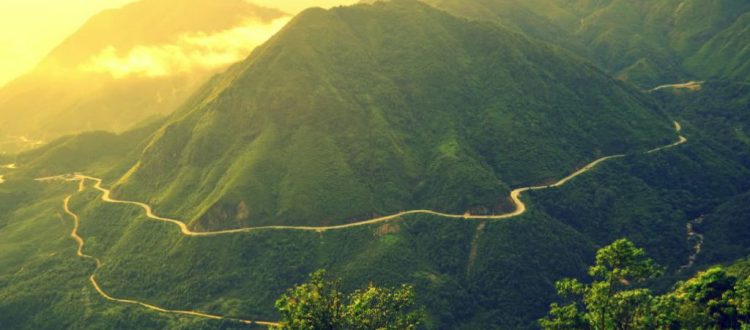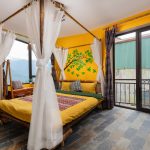O Quy Ho Pass
If you’ve ever been to Sapa, you must have heard of O Quy Ho Pass, the most majestic mountain pass in the northern part of our country, also known as Hoang Lien Son Pass. Situated on National Highway 4D, cutting through the Hoang Lien Son mountain range, the pass connects the provinces of Lao Cai and Lai Chau, with its summit serving as the boundary between the two provinces. Due to its crossing over the Hoang Lien Son mountain range or the Cloud Pass, named for the perpetual clouds covering its peak, tourists on a 3-day, 2-night Sapa tour to Northwest Vietnam often refer to it as O Quy Ho Pass.
Legend has it that in this mountainous region, there used to be a melodious-singing bird, associated with a love story that never came to fruition between a young couple. Over time, the haunting melody of that bird became the namesake for this wild pass at an altitude of nearly 2000 meters.

Dubbed one of the four great mountain passes in the Northwest, O Quy Ho is a destination that every adventure enthusiast wants to conquer. Also known as Hoang Lien Pass (because it traverses the Hoang Lien Son mountain range) or Cloud Pass (due to the constant cloud cover), the pass spans National Highway 4D, connecting Lao Cai and Lai Chau, and the summit serves as the boundary between these two provinces. Two-thirds of the route fall within the jurisdiction of Tam Duong District, Lai Chau, while the remaining one-third is in Sa Pa, Lao Cai. Perhaps holding the record for the longest mountain pass in Northwest Vietnam, O Quy Ho is nearly 50 km long, surpassing even Pha Din Pass (32 km, located on the border of Son La and Dien Bien provinces) or Khau Pha Pass (almost 40 km, in Yen Bai province). The height, challenges, and length of O Quy Ho have earned it the unofficial title of the “king of mountain passes in the Northwest.”
The beauty of O Quy Ho Pass is ever-changing: on the Lao Cai side, there’s mist, while on the Lai Chau side, there’s warm sunshine. In winter, there’s snow, and in summer, clouds gracefully hover, creating an enchanting allure for both local and international tourists.






